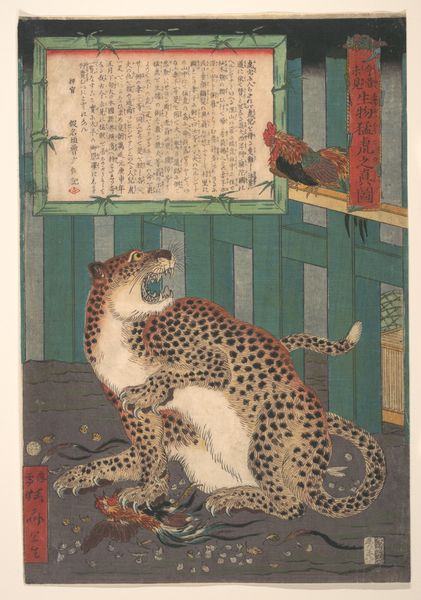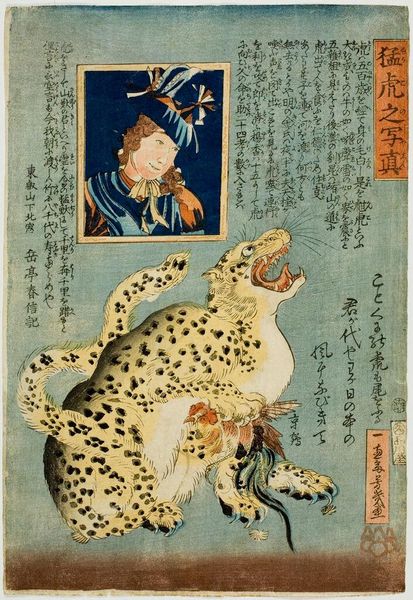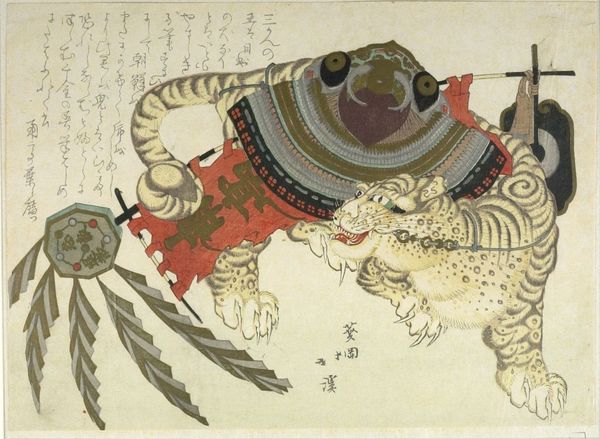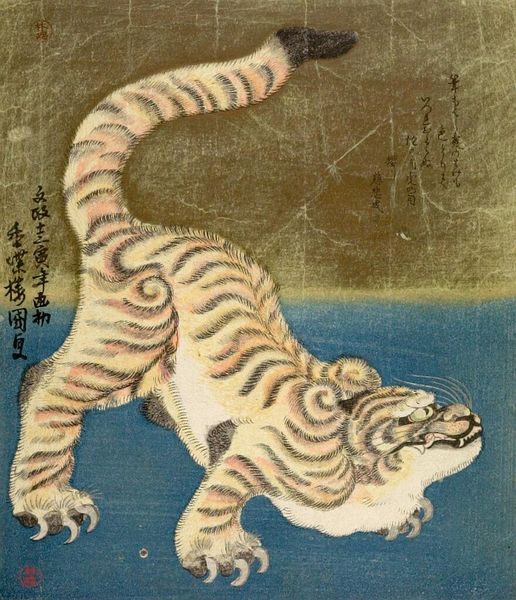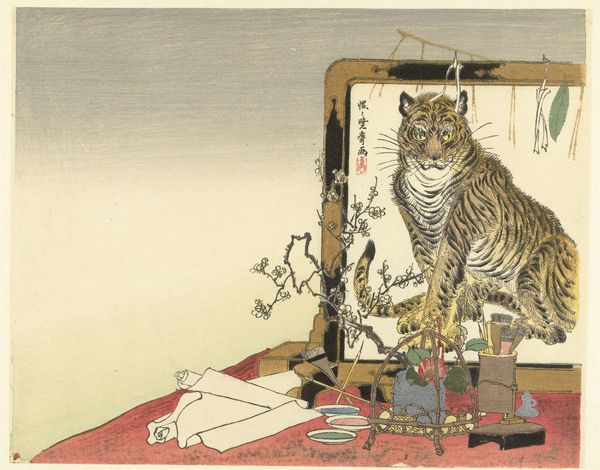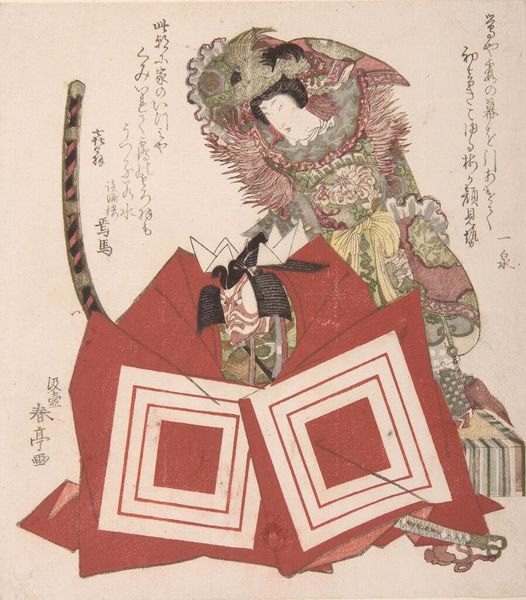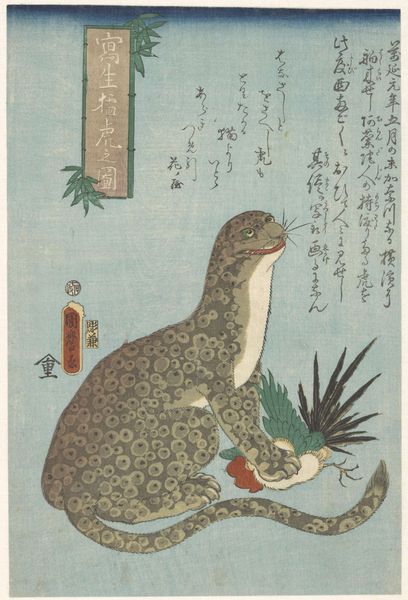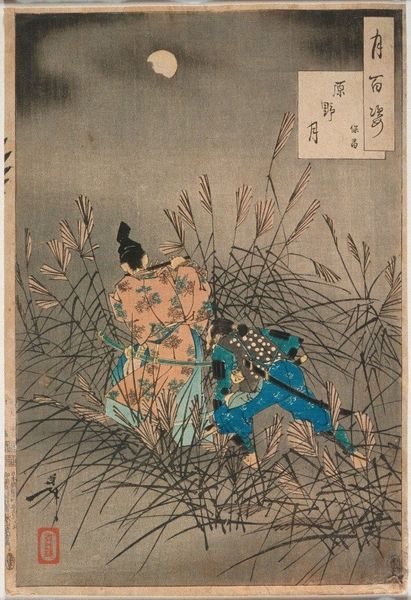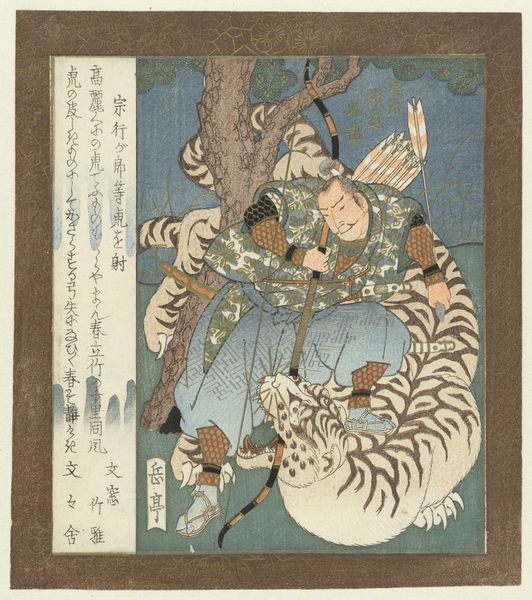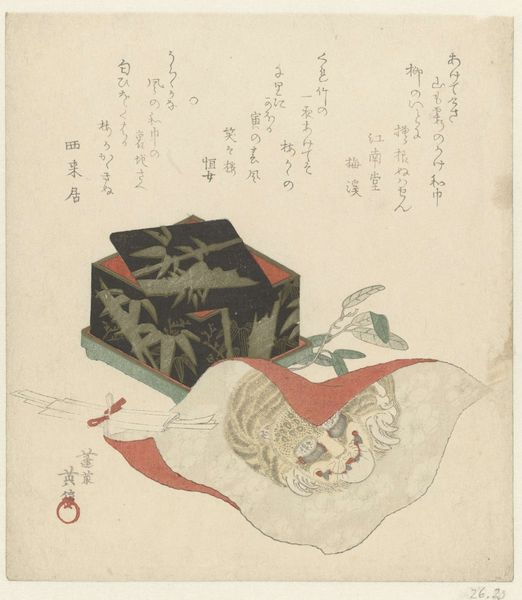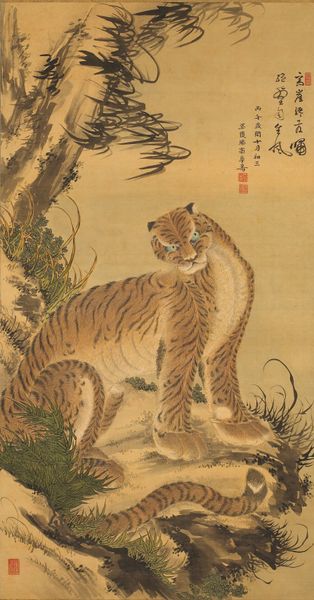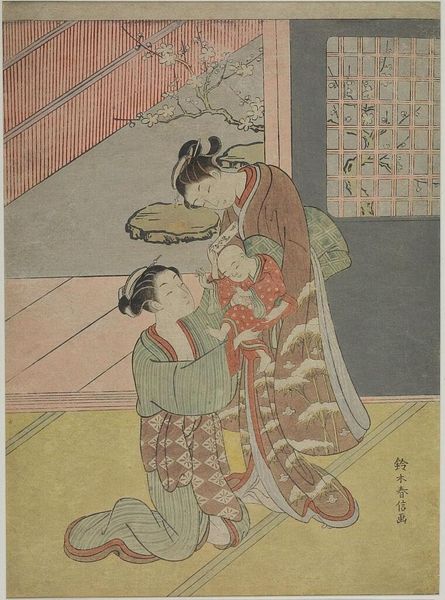
True Picture of a Live Wild Tiger Possibly 1860
Dimensions: Paper: H. 36.0 cm x W. 24.4 cm (14 3/16 x 9 5/8 in.)
Copyright: CC0 1.0
Editor: Here we have Kawanabe Kyōsai's "True Picture of a Live Wild Tiger." It's a print, part of the Harvard Art Museums collection. It definitely has a frenetic energy, with the tiger seemingly caught mid-roar. What symbols stand out to you? Curator: The tiger is a powerful symbol across many Asian cultures, representing strength and courage. Here, the inclusion of the rooster might allude to the tiger's predatory nature, or perhaps even a commentary on the social hierarchy. Do you see any other symbolic elements within the image? Editor: I notice all the Japanese text above the tiger; is that part of the symbolism? Curator: The text itself contributes a layer of cultural memory and understanding. It's not merely decorative; it may offer historical context or reinforce societal perceptions of the tiger. It acts as a window into how the tiger was viewed at the time, culturally and psychologically. Editor: I see. So, the text and imagery work together to convey a deeper meaning. Curator: Precisely. It's about how visual symbols like the tiger persist, evolving alongside our cultural understanding.
Comments
No comments
Be the first to comment and join the conversation on the ultimate creative platform.
